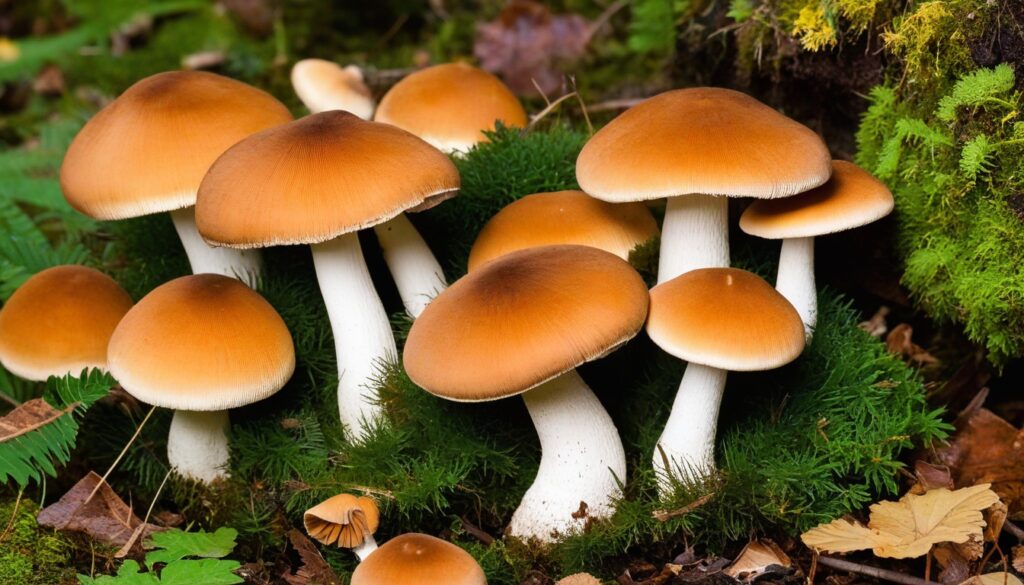Connecticut is home to a diverse range of edible wild mushrooms waiting to be discovered. Whether you’re a seasoned forager or a beginner, exploring the natural bounty of these delicious treasures is an experience like no other. In this comprehensive guide, we’ll explore the world of edible wild mushrooms in Connecticut, providing you with the essential knowledge and tools to safely identify and harvest them.
Key Takeaways:
- Connecticut is home to a variety of edible wild mushrooms.
- Understanding the basics of foraging is essential before venturing into the woods safely.
- Identification of common edible and poisonous mushrooms found in CT is crucial.
- Proper harvesting techniques and responsible foraging practices ensure continued growth and preservation of these natural resources.
- Joining local foraging communities and workshops can enhance your knowledge and experience.
The Basics of Foraging for Edible Wild Mushrooms
The world of wild mushrooms is as fascinating as it is delicious, but identifying them correctly can be a challenge. Before heading out into the woods, it’s crucial to learn the basics of foraging, starting with safe mushroom identification techniques.
To avoid dangerous look-alikes, study the unique characteristics of different edible mushrooms, such as their shape, color, gills, and spores. Bring a guidebook or enlist the help of an expert until you become confident in your own knowledge.
Understanding the habitat of different mushroom species is also critical to successful foraging. While some varieties, like morels and chanterelles, thrive in forests, others grow in meadows or on decaying organic matter. Familiarize yourself with different habitats and seek out spots where conditions are favorable for your target species.
Arming yourself with the right tools is another crucial aspect of foraging. A knife, basket, and gloves are essential items for a successful expedition, while a walking stick and compass can be helpful for navigating unfamiliar terrain.
Tools for Foraging Wild Mushrooms
Tool | Purpose |
|---|---|
Knife | To cleanly cut mushrooms from their base. |
Basket | To store mushrooms safely without squishing them or causing bruising. |
Gloves | To protect hands against cuts and scrapes while handling sharp mushroom stems. |
Walking Stick | To help you navigate through uneven terrain and provide stability on slippery surfaces. |
Compass | To ensure you don’t get lost in the woods. |
Being aware of proper foraging ethics is crucial to preserving natural resources. Always follow sustainable harvesting practices, like cutting mushrooms instead of pulling them, leaving behind some specimens to spore, and avoiding over-harvesting from small patches.
With these basics of foraging for wild mushrooms under your belt, you’ll be able to safely identify and gather edible varieties with confidence and enjoy the unique flavors of these forest treasures.
Common Edible Wild Mushrooms Found in CT
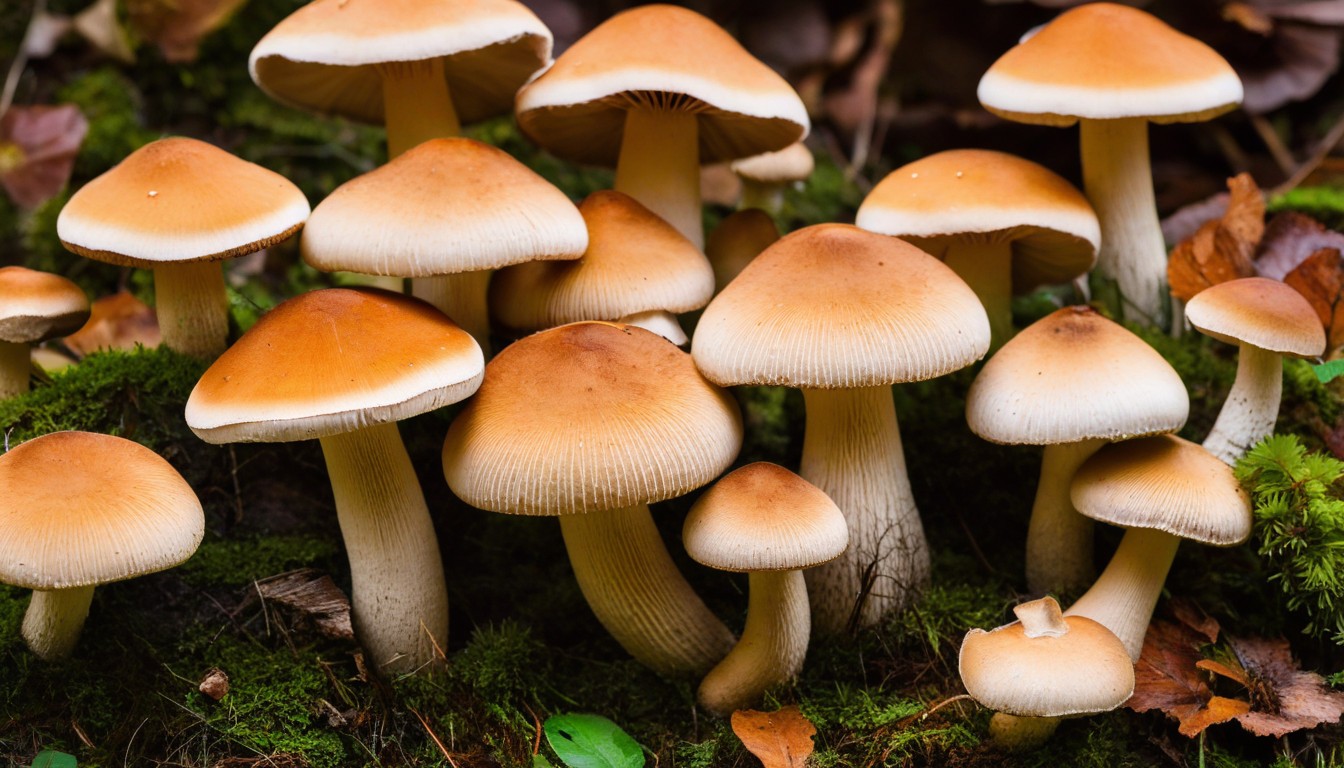
If you’re venturing into the woods of Connecticut in search of edible wild mushrooms, there are plenty of species to keep an eye out for. Here’s a rundown of some of the most commonly found varieties:
Mushroom | Description | When to Find Them | Where to Find Them |
|---|---|---|---|
Chanterelles | Pale yellow or orange caps in a wavy shape with distinctive ridges. Smooth, yellow stem. Lemon-like fragrance. | Summer and Fall | Under hardwood trees, especially oaks |
Morels | Distinctive honeycomb-textured cap, often in a cone shape. Light brown to dark black color. | Late Spring and Early Summer | Found around dead or dying trees and in grassy areas |
Hen of the Woods | Gray-brown, fan-shaped cap with a slightly fuzzy texture. Clustered growth pattern. | Summer and Fall | At the base of oak trees |
Black Trumpet | Trumpet-shaped with a wavy cap. Blackish-brown color. | Summer and Fall | Under hardwood trees, especially beeches and oaks |
Other edible wild mushrooms to look out for in CT include the chicken of the woods, the oyster mushroom, and the shaggy mane. Remember always to cross-check the identification of any mushroom before consuming it, and when in doubt, consult an expert or leave it be.
Poisonous Look-Alikes: Identifying Unsafe Mushrooms
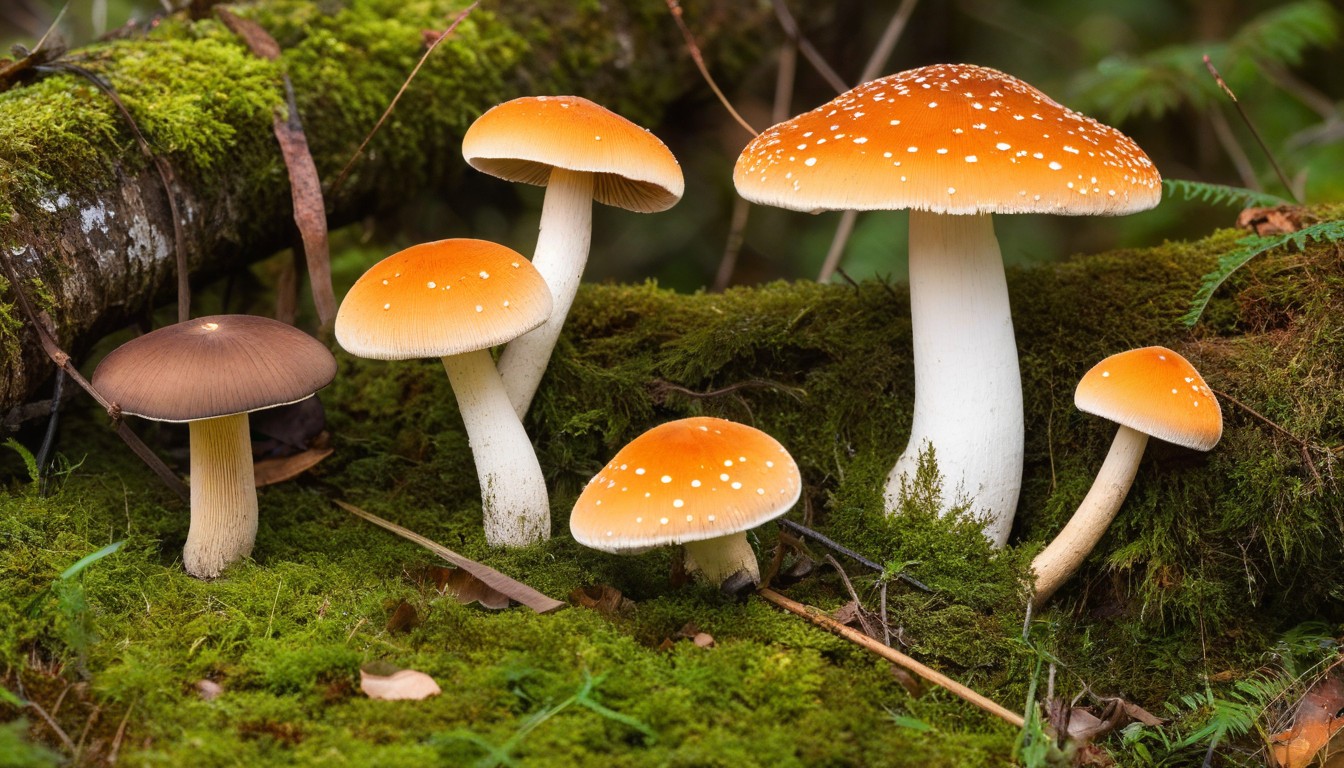
Foraging wild mushrooms comes with an inherent danger: the risk of poisoning. Unfortunately, many edible mushrooms have poisonous look-alikes that can be difficult to differentiate, putting foragers at great risk.
To prevent mushroom poisoning, it’s essential to carefully identify each mushroom you encounter and avoid those that resemble toxic species. Here are some commonly found poisonous look-alikes in Connecticut to watch out for:
Poisonous Mushroom | Look-Alike to Avoid |
|---|---|
Amanita phalloides (Death Cap) | Agaricus campestris (Meadow Mushroom) |
Galerina marginata (Deadly Galerina) | Psilocybe spp. (Magic Mushrooms) |
Inocybe spp. (Fibrous Caps) | Hygrophoropsis aurantiaca (False Chanterelle) |
It’s crucial to remember that this list is not exhaustive, and mushroom identification requires careful and thorough attention to detail. Before consuming any mushroom, consult a reputable guidebook, expert, or online community to ensure its safety.
By avoiding all poisonous look-alikes and prioritizing proper identification techniques, you can stay safe while enjoying the magic of wild mushroom foraging in Connecticut.
The Importance of Proper Mushroom Harvesting Techniques
Foraging for wild mushrooms is an exciting and rewarding activity, but it’s essential to follow proper harvesting techniques to ensure their continued growth. Sustainable foraging practices are crucial in preserving these natural resources for future generations.
When harvesting wild mushrooms, it’s important to leave no trace in the environment and not disturb the surrounding flora and fauna. Always be respectful of the ecosystem in which you are foraging and take only what you need.
Proper Harvesting Techniques
Technique | Description |
|---|---|
Twist and Pull | Gently twist the stem of the mushroom and pull it towards you to remove it from the ground. This technique is suitable for mushrooms with a delicate stem, such as chanterelles. |
Knife Cut | Use a sharp knife to cut the stem of the mushroom close to the ground. This technique is suitable for mushrooms with a tougher stem, such as boletes or morels. Be sure to cut the mushroom parallel to the ground to keep the mycelium intact and promote regrowth. |
Pinch and Snip | When harvesting mushrooms with a fragile cap, such as hedgehogs, gently pinch the base of the stem with your fingers and snip it with a pair of scissors. This technique prevents damage to the cap and ensures the mushroom continues to grow. |
Always double-check the identification of the mushroom before harvesting, and avoid picking mushrooms that are past their prime or have insect damage. Remember, taking care of the environment is crucial to sustainable foraging and preserving wild mushroom populations.
By following these proper harvesting techniques, you can ensure a bountiful supply of edible wild mushrooms for years to come.
Cooking and Preserving Edible Wild Mushrooms
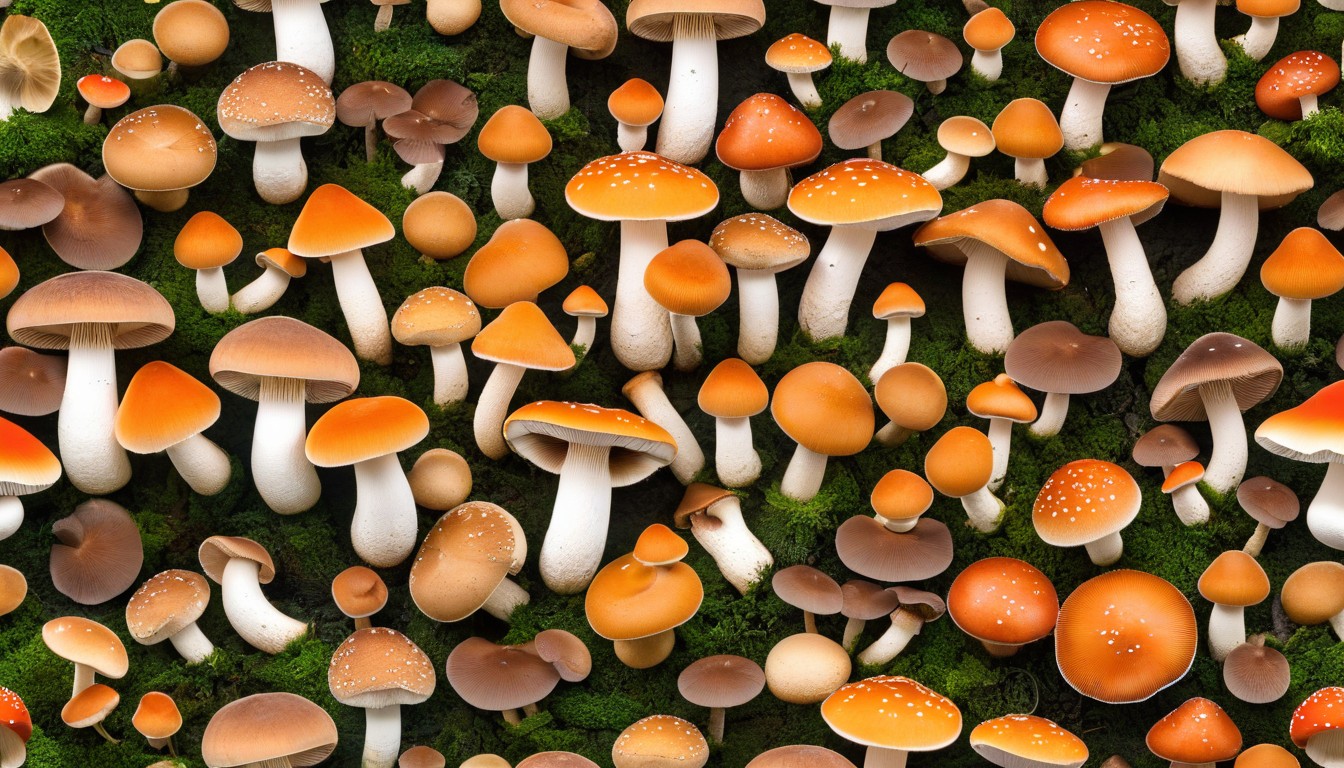
Congratulations on your successful foraging! Now that you have harvested your delicious wild mushrooms, it’s time to learn how to prepare and preserve them for future use.
Tips for Cooking Wild Mushrooms
- Never wash wild mushrooms; instead, brush them gently with a paper towel to remove dirt and debris.
- Try cooking them in butter or olive oil to let their natural flavors shine.
- Experiment with different techniques, such as sautéing, roasting, or grilling, to discover your favorite way to prepare them.
Culinary Techniques for Wild Mushrooms
Edible wild mushrooms are versatile and can be used in various culinary styles. Here are a few popular techniques for preparing wild mushrooms:
- Risotto: Whip up a creamy mushroom risotto by adding sautéed wild mushrooms to a hearty base of Arborio rice, white wine, and chicken or vegetable broth.
- Grilled: Bring out their earthy flavors by lightly grilling wild mushrooms and serving them with balsamic-glazed veggies.
- Sauteed: Simple and speedy, sautéing wild mushrooms in olive oil over high heat and tossing them with fresh herbs and garlic creates a delightful side dish.
Preserving Wild Mushrooms
Preserving wild mushrooms ensures an extended shelf life and access to their flavors throughout the year. Here are the most popular methods:
Method | Description |
|---|---|
Drying: | A simple and traditional method, mushroom drying requires spreading them out in a dry, well-ventilated place for several days to dehydrate them fully. They can then be stored in airtight containers. |
Freezing: | Sauté mushrooms in olive oil or butter and freeze them in an airtight container. Thawing them in the same way you cooked them brings back their natural flavor. |
Preserving in Vinegar: | Soak wild mushrooms in vinegar, salt, and herbs to create a savory, tangy pickle perfect for serving alongside cheese and crackers or as a topping on a salad. Store them in a cool, dark place. |
With these techniques and tips, you can enjoy the delicious taste of wild mushrooms year-round.
Foraging Safety Tips and Precautions
Foraging for edible wild mushrooms is an exciting activity, but it comes with potential risks. To ensure that your foraging trip is safe and enjoyable, it’s essential to follow some simple safety tips and take necessary precautions.
1. Poisonous Species to Avoid
The first and most crucial step in foraging for wild mushrooms is to identify the edible species correctly. Some mushrooms resemble edible ones but are toxic, and consuming them can cause severe illness. To prevent mushroom poisoning, familiarize yourself with the poisonous species that grow in your region and avoid them entirely.
2. Proper Handling and Storage of Mushrooms
After identifying and picking the right mushrooms, you need to handle them correctly. Safe handling practices include using a clean knife or scissors to cut the mushroom’s base, and placing them in a breathable basket or paper bag. Avoid using plastic bags for long-term storage, as it can cause moisture buildup, leading to spoilage or mold growth.
3. Consult Experts When in Doubt
It’s always best to seek the advice of experienced foragers or mycologists when in doubt about a mushroom’s identification. Mushroom identification apps or books can be helpful, but they are not always reliable. Experts can spot identifying features that may not be evident to a novice forager, and they can help you learn more about the local ecosystem and any safety concerns.
Tip: Never rely solely on online mushroom identification forums or social media groups to confirm mushroom identification. Some members may not be experts, and some information may be misinterpreted or inaccurate.
In summary, foraging for edible wild mushrooms is a fantastic way to connect with nature, but it requires taking necessary precautions to ensure your safety and the environment’s health. By following these safety tips, you can enjoy your foraging trip and have a delicious feast without any health risks.
Joining Local Foraging Communities and Experts
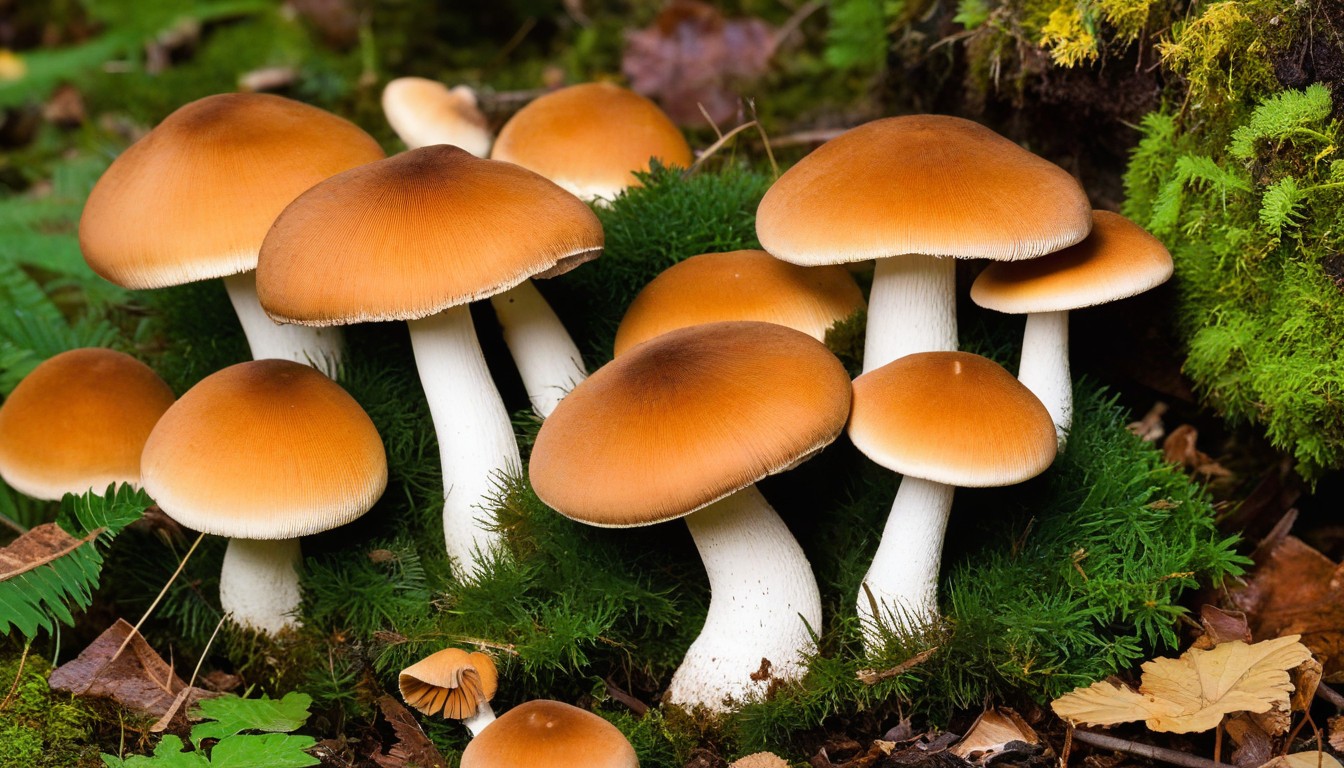
Foraging for wild mushrooms is a unique and rewarding experience, but it can also be made more enjoyable and educational by joining local foraging communities and learning from experienced mushroom experts. These communities offer a chance to connect with like-minded individuals who share your passion for nature and foraging.
Connecticut Foraging Communities
Connecticut is home to many foraging communities that meet up regularly to share their experiences and knowledge. Some popular groups include the Connecticut Valley Mycological Society, the Berkshire Mycological Society, and the Connecticut-Westchester Mycological Association. These groups organize walks, workshops, and events for members to learn more about wild mushrooms and connect with fellow foragers.
Mushroom Experts in CT
If you’re looking to deepen your knowledge of wild mushrooms, consider seeking guidance from experts in the field. Some notable mushroom experts in Connecticut include Bill Yule, a mycologist who has studied mushrooms for over 40 years and offers workshops and identification sessions, and Wesley Price, a naturalist and passionate educator who hosts foraging expeditions and classes.
Foraging Communities | Mushroom Experts |
|---|---|
Connecticut Valley Mycological Society | Bill Yule |
Berkshire Mycological Society | Wesley Price |
Connecticut-Westchester Mycological Association |
Joining a local foraging group or seeking the wisdom of experienced mushroom experts can help you gain a deeper understanding of the wild mushrooms in Connecticut. Take advantage of these resources to enhance your foraging skills and connect with a community passionate about exploring nature’s bounty.
Other Uses for Wild Mushrooms
While wild mushrooms are primarily known for their culinary uses, they also have several other fascinating applications.
Medicinal Mushrooms
Certain wild mushrooms have been used in traditional medicine for centuries and are now gaining recognition in modern medicine for their healing properties. Some examples include:
Mushroom | Medicinal Properties |
|---|---|
Reishi | Immune system support, stress relief, liver support |
Chaga | Antioxidant, anti-inflammatory, immune system support |
Lions mane | Brain function, nerve growth |
While further scientific research is needed, incorporating medicinal mushrooms into your health routine may have potential benefits.
Mushrooms in Crafts
Wild mushrooms also have several uses in arts and crafts. Some examples include:
- Creating natural dyes for fabrics and yarns
- Making mushroom spore prints for artwork
- Using mushroom caps as stamps for prints
With a little creativity, the possibilities are endless!
Overall, wild mushrooms have incredible potential beyond their delicious taste. Whether you’re exploring their medicinal properties or incorporating them into your crafts, it’s fascinating to discover the many other aspects of these natural wonders.
Conclusion
Foraging for edible wild mushrooms in Connecticut can be a delightful and rewarding experience. From the delicious chanterelles to the meaty hen of the woods, these mushrooms offer unique flavors and culinary experiences that cannot be found in the grocery stores.
Remember always to prioritize safety and sustainability while foraging. Avoid consuming any mushroom unless you are confident that it’s safe for consumption. Always take the time to learn the basics of safe mushroom identification and follow sustainable foraging practices to ensure that you’re not damaging the environment.
Joining local foraging communities and connecting with experts can be a great way to enhance your knowledge and improve your foraging skills. Don’t be afraid to seek advice or guidance when necessary.
Beyond their culinary delights, wild mushrooms have other uses such as their medicinal properties and their use in arts and crafts. Explore these other fascinating aspects of these natural wonders, and expand your horizons.
With the knowledge and techniques provided in this guide, you have the tools to confidently forage for these tasty treasures and take advantage of nature’s bountiful offering. So, get ready to explore the woods, enjoy the fresh air, and embark on your foraging journey! Happy foraging!
FAQ
Can I forage for edible wild mushrooms in Connecticut?
Absolutely! Connecticut is home to a variety of edible wild mushrooms that can be safely foraged and enjoyed.
How do I identify edible wild mushrooms?
Proper mushroom identification is crucial for foraging. There are several techniques and resources available to help you identify edible mushrooms, including field guides, online forums, and local experts.
Are there any poisonous mushrooms I should be aware of?
Yes, it’s essential to be aware of poisonous mushrooms and their look-alikes. Connecticut is home to some toxic species, and proper education and caution are necessary to avoid them.
When is the best time to forage for wild mushrooms in Connecticut?
The best time to forage for wild mushrooms in Connecticut varies depending on the species. Generally, spring and fall are prime seasons for mushrooms, but specific mushrooms may have different growing seasons.
What tools do I need for foraging wild mushrooms?
Foraging for wild mushrooms requires a few essential tools, including a basket or bag for collecting mushrooms, a knife for harvesting, and a field guide or smartphone app for identification.
Can I eat wild mushrooms raw?
It is generally recommended to cook wild mushrooms before consuming them, as some species might be difficult to digest or contain toxins that are eliminated through cooking.
How should I store wild mushrooms after harvesting?
To ensure freshness and prevent spoilage, it is best to store wild mushrooms in a paper bag or waxed paper in the refrigerator. Avoid using plastic bags, as they can cause moisture buildup and accelerate decay.
Are there any regulations or restrictions for foraging wild mushrooms in Connecticut?
While foraging for personal use is generally allowed in Connecticut, it’s essential to familiarize yourself with the state regulations and any specific rules for public and private land where you plan to forage.
Can I sell the wild mushrooms I forage?
Selling wild mushrooms requires appropriate permits and licenses. It’s important to understand the legal requirements and restrictions for selling foraged mushrooms in Connecticut.
Are there any foraging workshops or experts in Connecticut that I can learn from?
Yes! Connecticut offers various foraging workshops, classes, and experts who can provide valuable knowledge and guidance on wild mushroom foraging.

